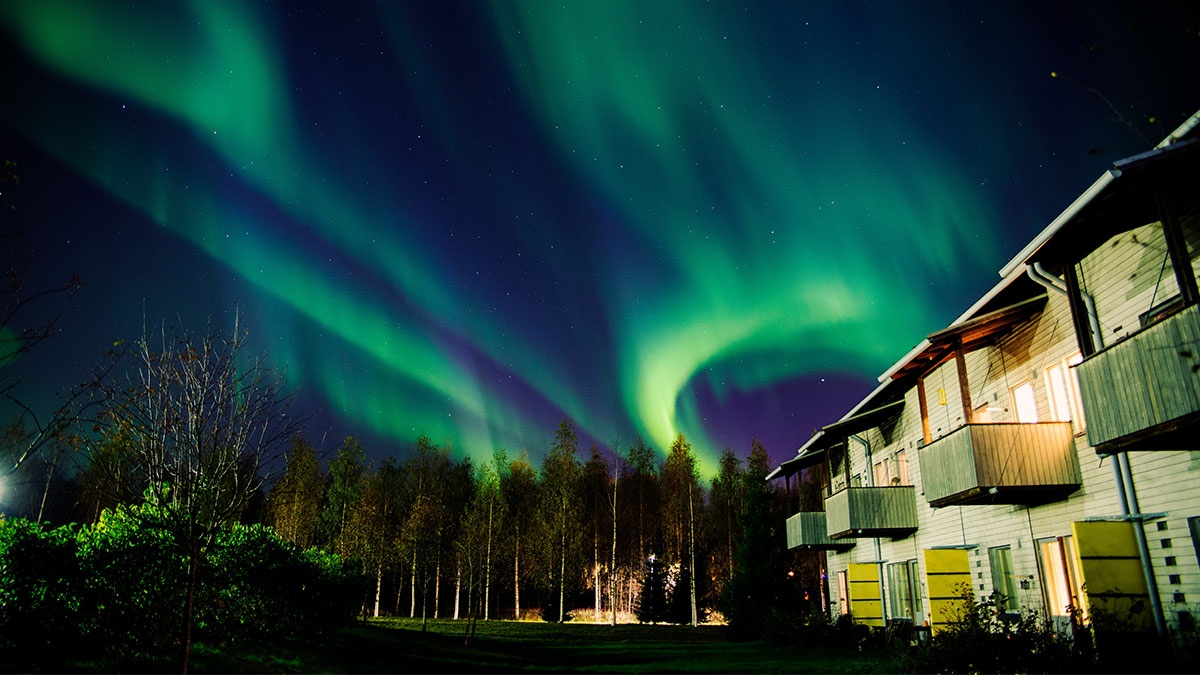Greater accuracy for aurora borealis service

When the northern lights light up the sky, increased fluctuation is usually measured in the magnetic field on the earth's surface. Real-time monitoring of magnetic activity based on this has served as a product indicating the likelihood of the appearance of the aurora already for about 20 years.
Aurora service now has two threshold values
Some improvements have now been introduced at the aurora borealis service. The principle is unchanged: growing variations in the magnetic field reveal an increase in the likelihood of the appearance of the aurora. The most recent values that have been measured are displayed on a map and the daily history is shown in a bar chart for each observation station. The most important change is that we have redefined the threshold values used for reporting a growing likelihood of the aurora. Yes, we speak of threshold values in the plural because there are two of them, instead of one, as we did before. To set the threshold values we used 146,747 pictures from aurora borealis cameras from Kevo, Muonio, and Hankasalmi. The pictures showed 463 hours of aurora displays, also containing moments of dark sky, which was important for acquiring statistical material also on the kinds of activity levels that usually do not involve the aurora. The higher threshold value was largely equal in its significance to the previous one: when it is exceeded, an imposing aurora is likely to appear. This is why the columns and the markings on the map are coloured red when the higher threshold is exceeded, as was done previously when the only threshold was crossed. As a new feature we have introduced is the use of a lower threshold; when it is crossed, the columns and the markings on the map are coloured yellow. When the lower level is exceeded, but the higher one is not, the appearance of an aurora is quite possible, but it is usually dim and subdued. Each monitoring location still needs its own threshold values which are presented in the form of horizontal lines in the bar chart.
R-index shows likelihood of northern lights
The change also involved the way that the activity index is calculated. We call it the R-index, where “R” refers to revontuli - the Finnish word for the aurora borealis. The R-index describes the speed of change in the magnetic field, but it does not directly involve physical units. The value of the R-index is usually in the tens or hundreds, which means that it can be conveniently reported as an integer. The R-index is calculated at intervals of five minutes instead of ten minutes, as was done in the previous activity index. This means that the service is now closer to real time than it was before. The accessibility of the service has also been improved. The yellow markings on the map have been changed to squares and the red ones are shaped as rhombuses, which means that identifying the different levels no longer depends on colour alone.
Further information
Updated aurora service https://en.ilmatieteenlaitos.fi/auroras-and-space-weather Thematic information on auroras in Finland en.ilmatieteenlaitos.fi/auroras-in-finland Group Leader, Space Weather Research Tiera Laitinen tel. +358 29 539 4651
